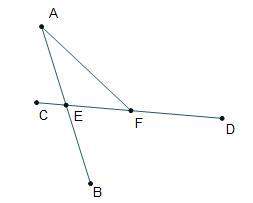LaTeX: x^2+bx+cx 2 + b x + c
Part A: Factor (4 points).
Part B: Check your work by mult...

Mathematics, 08.02.2021 16:20 462nolan
LaTeX: x^2+bx+cx 2 + b x + c
Part A: Factor (4 points).
Part B: Check your work by multiplying your factors (1 point).
1.) LaTeX: x^2-11x+28x 2 − 11 x + 28
2.) LaTeX: x^2-5x-84x 2 − 5 x − 84
* * * * * * * * * * * * * * *
LaTeX: ax^2+bx+ca x 2 + b x + c
Part A: Factor (4 points).
Part B: Check your work by multiplying your factors (1 point).
3.) LaTeX: 2x^2+15x+182 x 2 + 15 x + 18
4.) LaTeX: 3x^2+2x-53 x 2 + 2 x − 5

Answers: 1


Other questions on the subject: Mathematics

Mathematics, 21.06.2019 19:30, sk9600930
Sundar used linear combination to solve the system of equations shown. he did so by multiplying the first equation by 5 and the second equation by another number to eliminate the y-terms. what number did sundar multiply the second equation by? 2x+9y=41 3x+5y=36
Answers: 1


Mathematics, 21.06.2019 21:10, basketball6076
Given: lines a and b are parallel and line c is a transversal. prove: 2 is supplementary to 8 what is the missing reason in the proof? statement reason 1. a || b, is a transv 1. given 2. ∠6 ≅ ∠2 2. ? 3. m∠6 = m∠2 3. def. of congruent 4. ∠6 is supp. to ∠8 4. def. of linear pair 5. ∠2 is supp. to ∠8 5. congruent supplements theorem corresponding angles theorem alternate interior angles theorem vertical angles theorem alternate exterior angles theorem
Answers: 3
You know the right answer?
Questions in other subjects:


Mathematics, 14.10.2021 01:00

Social Studies, 14.10.2021 01:00







Mathematics, 14.10.2021 01:00




